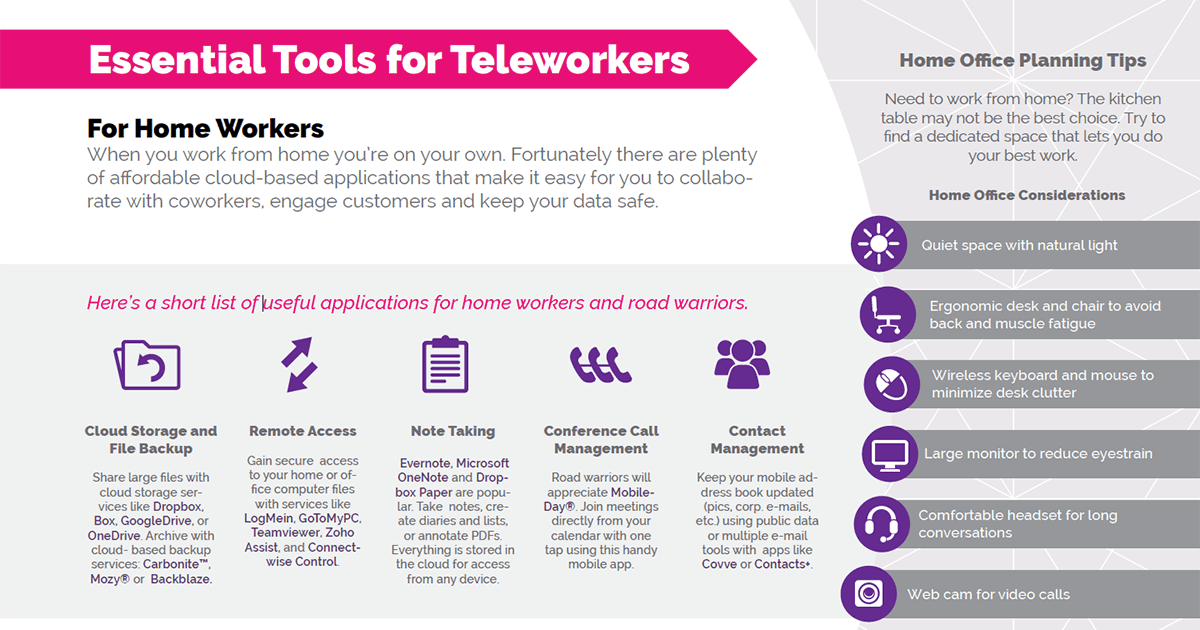What not to worry about when your employees suddenly need to work from home

The Covid-19 crisis is forcing all of us to accept a “new normal”. While everyone is hoping for a short-lived adjustment, many of us will have to get used to our employees or co-workers being remote for the time being. If your team is full of knowledge workers, like mine, this may not be a big adjustment, but many organizations have employees who do their work in the office. Think about hospital administrative staff, technical support teams, municipal employees, unionized administrative staff in a manufacturing site, etc. These groups are generally not used to working outside the office, and neither are their managers!
Given my experiences, I wanted to share what I’ve learned from managing a distributed team that includes many employees who work from home. I suspect many managers are thinking:
- How will we be able to make this experience work?
- Will my employees be effective outside of the office?
- What tools do I need to implement and where can I get them?
Based on that experience, I wanted to provide a few reassuring observations.
- Yes, work gets done
In fact, I’m incredibly proud of my team – they produce high-quality work quickly and everyone adheres to the same mission and values, whether or not they’re in an office building. Yes, sometimes you do have to virtually hunt for someone because you can’t look in their cube but you quickly learn how to find them on instant messaging or text – just like you might walk down the hall.
Numerous studies have shown that employees who work from home are equally if not more productive than their office-based colleagues. As a manager you just need to be sure you schedule some formal one on one time to compensate for the informal catch-up at lunch or in the hall. I also think it’s a good idea to use a task tool like Asana, Base Camp, or Microsoft Teams to track actions. It’s easier for you and your team to manage some personal flexibility if each of you know what’s expected and when. Bottom line, whether your work from home implementation is short-lived or you come to make it a permanent part of your toolset and business continuity planning, employee productivity should not be a hurdle.
Working virtually may be a bit of a learning curve at first, but don’t underestimate your team. So many of us use Skype or FaceTime or What’s App to keep up with our kids, grand parents or long-distance friendships that most of us are comfortable with the interactions, even if we need some help with the technology on day one. Which brings me to my next point:
- Relationships can thrive
Business is about relationships, both inside and outside the company. The good news is that today’s tools allow your employees to stay connected… even when they’re separated. Some of the strongest relationships I see on my team are between employees who work in different locations but connect regularly by phone / video / text/ etc.

Sure, they may miss out on spontaneous “watercooler” moments, but today’s communications tools allow for quasi-instantaneous sharing of information, whether it’s a compliance doc or a meme. Employees who are aren’t used to working from home may actually start deepening their work relationships as they create a sense of normalcy for themselves while adjusting to this new situation. Business leaders can also ensure that they add a light socializing component to virtual meetings in order to show that connections can be maintained and even enhanced outside of habitual office structures.
- The right tools are here
Even if it’s new to your company, there are already a slew of tools available that enable voice, video, screensharing, messaging and other activities to keep your employees connected, productive and engaged.
Our own work@home offer includes solutions for both “typical” knowledge workers and contact center employees. These solutions are robust, easy to implement, and offer comprehensive support for companies of all sizes. Furthermore, our teams are available to help you figure out which is the best option for your particular situation.
In the end whether or not this becomes a key part of your MO going forward or just a portion of your business continuity planning, working from home should not be considered a threat to keeping your business going.


